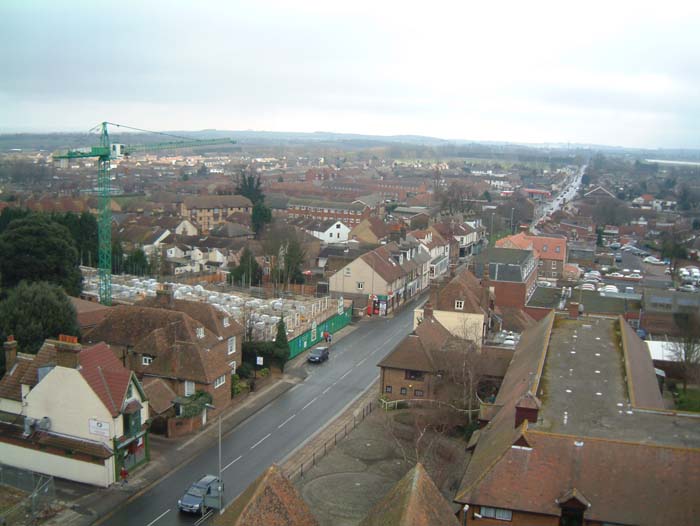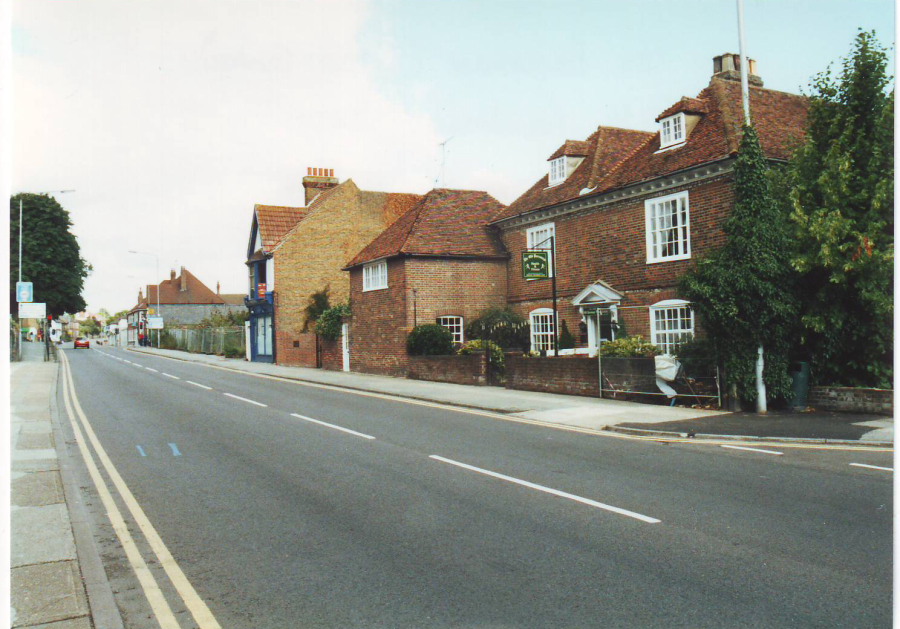Rainham Vicarage & Parsonage
I recently started to give talks again on the history and development of Rainham and part of my preparation was to endeavour to answer a question that used to be posed before 1962 as to why we had a Vicarage next door to the Parsonage. Having done a considerable amount of investigation I found that Mr Stuart Jelly had actually reported the reason in the Rainham Church magazine of July 1946, so I hope between us the definitive reason may again be reported.

Photo showing Rainham Parsonage towards bottom left of photo and site of old post office next door with flats being built
The Doomsday Book records that the manor of Renham was given by WiIliam the Conqueror to Robert de Crevequer and in 1137 he in due course gave the churches on his estates, and in Rainham's case 18 acres ofland, to the Canons of Leeds Abbey. The Canon or Abbot of Leeds built the Parsonage as the abode of the Vicar who was appointed by him to look after the spiritual needs of the people of Rainham, but in 1536 Henry VIII suppressed the monasteries and confiscated all the properties belonging to them, so the 18 acres with the church at Rainham became the property of the Crown. Unfortunately the Parsonage and the 18 acres of land were not returned to the Archbishop of Canterbury by Queen Mary in 1558 when the churches were conveyed and eventually \0 years later, Queen Elizabeth leased the area to Dorothy Stafford for £16 per annum for a term of30 years. Later the lease was granted to Captain Robert Moyle who died in 1659 and his grandson, John Moyle of Buckwell, carried it in marriage to Robert Bretton of Elms, near Dover. Robert Bretton died in 1708 and in due course disposed of it to Sir Edward Dering.
The Dering family, although residents for many generations at Pluckley, are recorded in the church records. The Derings eventually sold it to 'Squire' WaIters of Berengrove House, presumably in the latter part of the 19th century and then in subsequent years Mr Edwin Jelly and hi s son Stuart also became owners. Older residents will remember Dr Irby Webster living and having his surgery at the Parsonage, and it would seem that he must have been leasing the property although he was there for many years and was patron of various societies as well as reading the lesson regularly at the church. There have been a number of owners in recent years and the Parsonage is now the Fitness Club. The older part of the building is thought to be around 300 years and it is hoped that this may be preserved as so many of our older properties have been demolished.
Obviously the Vicar had no official residence after the dissolution of the monasteries in 1536, so in the early part of the next century the parishioners provided finance for a new Vicarage next door to the Parsonage which remained in use until 1962 when it was sold for the development of the Post Office sorting building and a new Vicarage was built in Broadview Avenue. The 17th century building was immediately adjacent to the path of the High Street and had an oriel window on the first floor from which movements in the High Street could be viewed. It has a large attractive garden with many well-established trees and fine lawns on which various village fetes were held. There was a coach house and stable on the eastern side, presumably used by the Vicar for his pony and trap by which he would visit parishioners. I understand that plans have been agreed for 43 flats to be erected on this site which may provide a modern necessity but Rainham lost part of its history when the Vicarage was demolished in 1962.
Freddie Cooper















































































